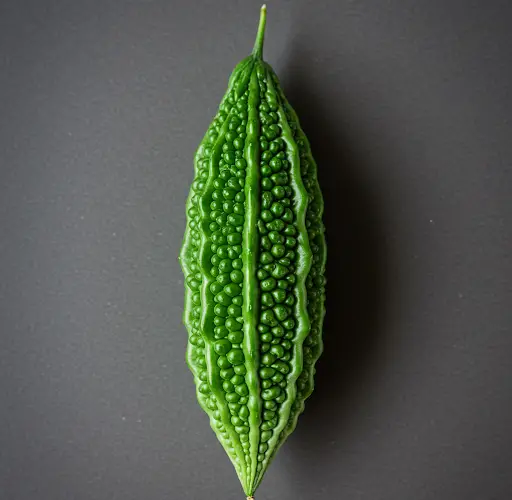How to Easily Grow Bitter Melon in a Bag of Soil at Home for an Extremely Fruity Harvest
Bitter melon (Momordica charantia), also known as bitter gourd or karela, is a nutritious vegetable widely used in Asian, African, and Caribbean cuisines. It is packed with vitamins, minerals, and antioxidants, making it an excellent addition to a healthy diet. If you lack a traditional garden, don’t worry! You can grow bitter melon easily in a bag of soil at home with minimal effort. This method is space-saving, highly productive, and perfect for small balconies, patios, or even rooftops. Let’s go through a step-by-step guide to growing bitter melon in a soil bag successfully.
Why Grow Bitter Melon in a Soil Bag?
Growing bitter melon in a bag of soil has several benefits:
- Space-efficient: Ideal for small spaces like balconies or terraces.
- Cost-effective: No need for garden beds or raised planters.
- Better drainage: Reduces the risk of root rot.
- Portable: Move the plant around to optimize sunlight exposure.
- Pest control: Growing in a contained space helps prevent soil-borne diseases and pests.
Materials Needed
- A large soil bag (at least 25-30 liters)
- Bitter melon seeds or seedlings
- Quality potting mix or garden soil
- Compost or organic fertilizer
- Scissors or a knife (to cut drainage holes)
- Stakes or a trellis (for plant support)
- Watering can or hose
- Mulch (optional)
Step 1: Preparing the Soil Bag
- Select a sturdy bag: A thick plastic or woven soil bag works best to hold enough soil while maintaining drainage.
- Punch drainage holes: Using scissors or a knife, create 4-6 small holes at the bottom of the bag to prevent waterlogging.
- Position the bag: Place the bag in a sunny spot that receives 6-8 hours of sunlight daily.
- Fill with soil: Use rich, well-draining soil mixed with compost. You can also add organic fertilizer to boost nutrients.
Step 2: Planting Bitter Melon Seeds or Seedlings
Method 1: Growing from Seeds (Recommended)
- Soak the seeds: Before planting, soak bitter melon seeds in warm water for 12-24 hours to speed up germination.
- Plant the seeds: Make 1-inch deep holes, spacing them 8-12 inches apart, and place 2-3 seeds per hole.
- Cover lightly: Add a thin layer of soil over the seeds and water gently.
- Germination time: Seeds typically sprout in 7-14 days, depending on temperature and moisture.
Method 2: Growing from Seedlings
- Transplanting: If using seedlings, dig a small hole in the soil bag and carefully place the seedling inside.
- Firm the soil: Lightly press the soil around the base of the seedling to provide stability.
- Water immediately: Keep the soil moist but not soggy.
Step 3: Providing Support for Bitter Melon Vines
Bitter melon is a climbing vine that needs proper support for better fruit production.
- Install a trellis, bamboo poles, or wire mesh near the soil bag.
- Gently tie the vines to the trellis as they grow.
- This prevents fruits from touching the ground, reducing the risk of rot and pests.
Step 4: Watering and Fertilizing
- Watering: Keep the soil evenly moist. Water 2-3 times a week, increasing frequency during hot weather.
- Mulching (Optional): Add mulch like straw or dry leaves to retain moisture and reduce weeds.
- Fertilizing: Apply organic fertilizer every 2-3 weeks (e.g., compost tea, fish emulsion, or manure tea) for healthier plants and more fruits.
Step 5: Sunlight and Maintenance
- Sunlight: Bitter melon needs at least 6-8 hours of direct sunlight daily for optimal growth.
- Pruning: Remove weak or damaged leaves to improve air circulation and boost fruit production.
- Pest Control: Watch out for aphids, caterpillars, and whiteflies. Use neem oil spray or natural predators like ladybugs to control them.
Step 6: Harvesting Bitter Melon
- Bitter melons grow quickly and are ready to harvest in 60-90 days.
- Pick the fruits when they are 5-8 inches long and still green.
- Overripe bitter melons turn yellow and become too soft.
- Harvest every 2-3 days to encourage more fruit production.
Tips for Maximizing Bitter Melon Yield
- Regular Harvesting: Picking fruits regularly promotes continuous growth.
- Hand Pollination: If fruit production is low, use a small brush to transfer pollen from male to female flowers.
- Rotate the Position: If possible, shift the bag’s location for better sunlight exposure.
- Use Companion Planting: Grow bitter melon with beans, basil, or marigolds to deter pests naturally.
Common Problems and Solutions
| Problem | Cause | Solution |
|---|---|---|
| Yellowing leaves | Overwatering or nutrient deficiency | Reduce watering and add compost |
| No fruits forming | Lack of pollination | Hand-pollinate using a brush |
| Bitter melon cracking | Irregular watering | Keep soil consistently moist |
| Small, weak fruits | Poor soil nutrients | Feed with organic fertilizer |
Final Thoughts
Growing bitter melon in a bag of soil at home is an easy, effective, and space-saving way to enjoy fresh, organic vegetables. Whether you have a small balcony, patio, or rooftop, this method ensures a bountiful harvest of extremely fruity bitter melons with minimal effort.
By following these simple steps, you can enjoy homegrown bitter melon in just a few months. Give it a try, and experience the satisfaction of harvesting your own nutritious and delicious bitter melons straight from your home garden!



